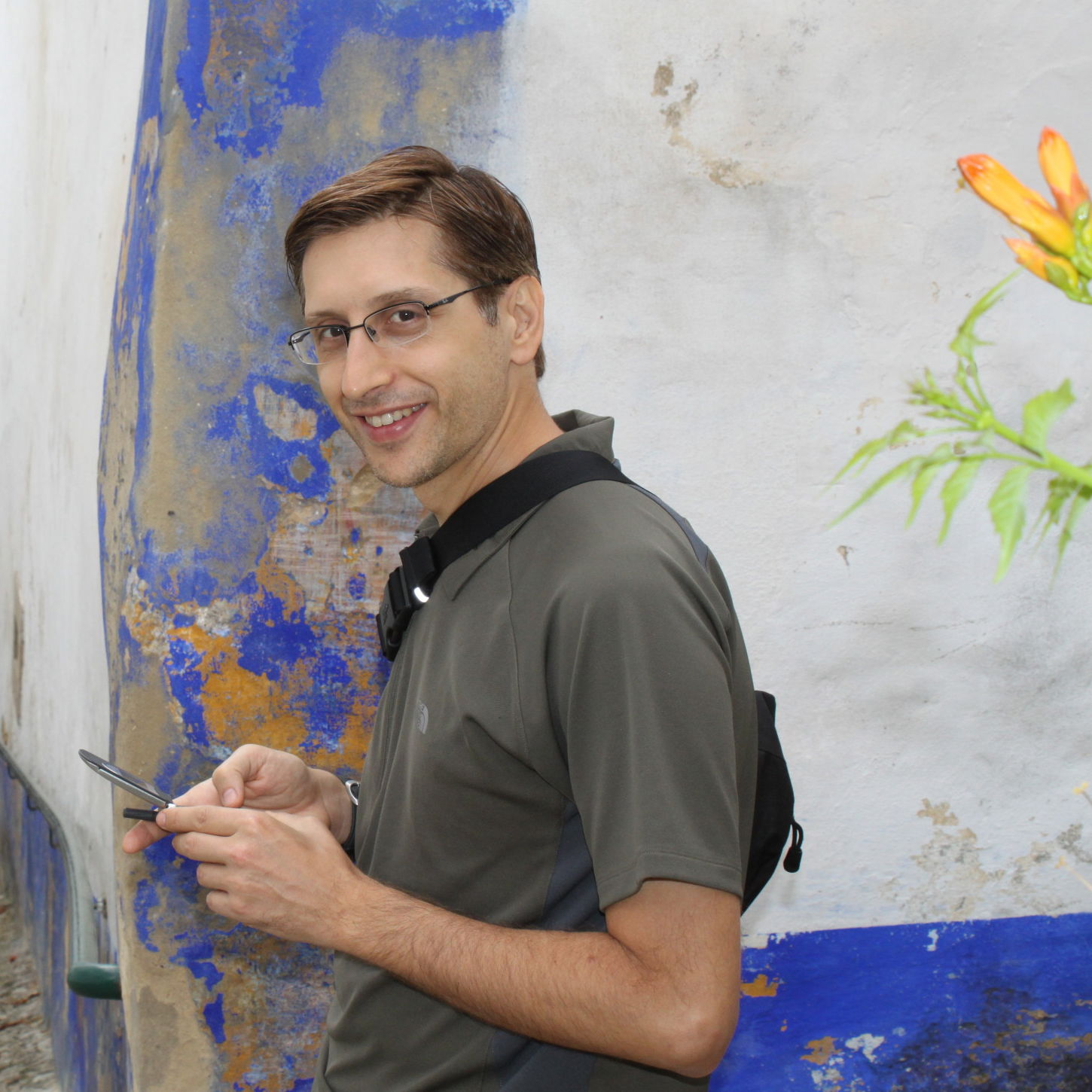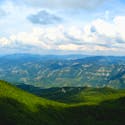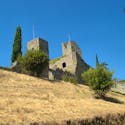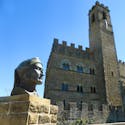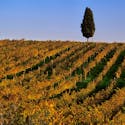Spirituality and Nature at the Franciscan Sanctuary
I visited the Sanctuary of La Verna for the first time as a boy: our school organized a retreat in this Franciscan monastery for a few days. At that time it was just a vacation, but I was still impressed by the beauty and peaceful quiet of the place. During the years I've visited it many times to experience the peace and quiet at least for a day immersed in the setting of the sanctuary, enjoying the nature that surrounds it. I think it's a very special place where you can get in touch with yourself.
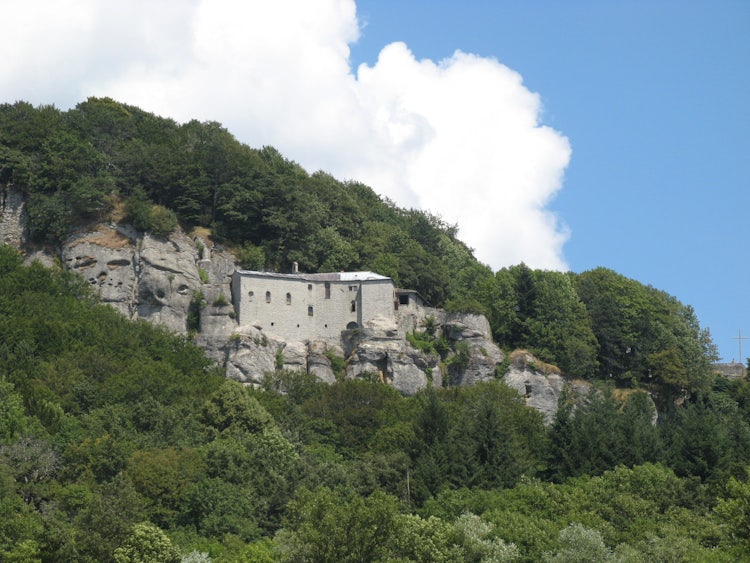
La Verna is famous because it is St. Francis lived here. It is today one of the places where St. Francis is venerated and even on a short visit you can get a sense of its artistic cultural, historical and religious interest.
The Sanctuary is located on Mount Penna (also called Mount of La Verna) above Chiusi della Verna in the province of Arezzo. Together with Camaldoli, it represents the main spiritual and religious sites in Casentino. Every year, La Verna is visited by numerous visitors (Christians and not) because St.Francis is one of the most adored saints worldwide as well as Italy's Patron Saint.
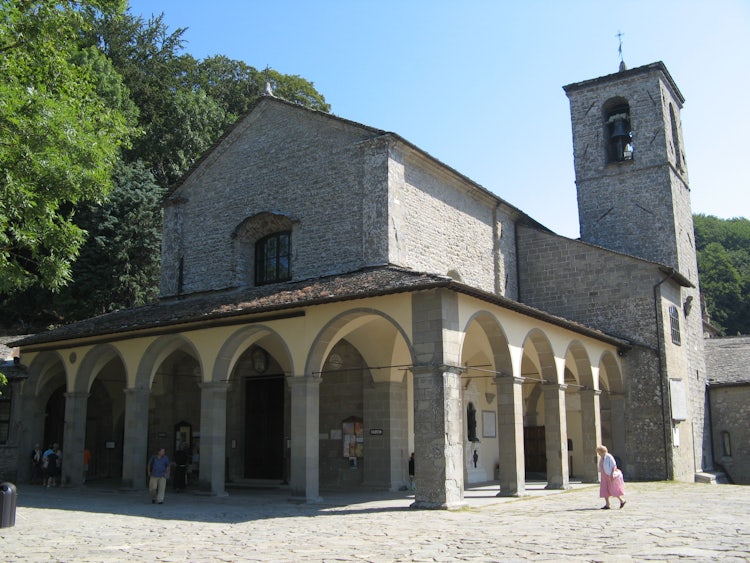
A brief history
The Mount of La Verna was donated to St. Francis in 1213 by Count Orlando Cattani of Chiusi of La Verna. The count described the mount as a perfect and ideal place for contemplation amidst nature:
I have in Tuscany a faithful mount that is named Mount of La Vernia, which is really isolated and wild and perfect for those who want to do penance in a remote place or to those who want to live in solitude. If you would like it I will give it to you and your followers for my soul's safety
A hermitage was created on the mount and became the favorite site for Francis and his followers for spending long periods of meditation and prayer. Francis' last stay at La Verna was in 1224 when he was already tired and ill. During this time, while he was absorbed in praying, he had a vision and received the stigmata that he carried until his death two years later.
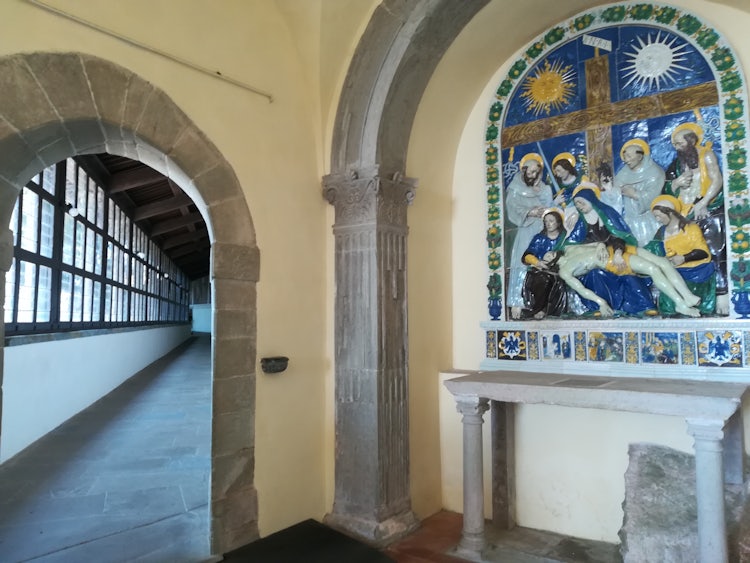
Tour of the Sanctuary
Coming in the ancient door you enter a small portico that shelters the entrances to the guest quarters, to the cloisters and to the small church of Santa Maria degli Angeli, St. Mary of the Angels.
Climbing up a few steps you arrive at the Quadrante (Dial), the large paved square where you access all of the main areas of the Sanctuary. The large square took its name from the sundial engraved on the Bell's Tower of the Basilica: "if the sun looks at me I'll show you the time". A big wooden cross overlooks the Casentino valley: La Verna is at 1228 meters above sea level and you can admire a breathtaking panorama of the valley below.
From the Quadrante, you can enjoy a wide-ranging sight of the monastery as well: the Basilica with its bell tower surrounded by the portico and the small chapel of Santa Maria degli Angeli. The monastery's stone roofs with funny-shaped chimneys built by the friars, the well which sated the thirst of guests and pilgrims. Today if you need to cool down, you can use the small fountain at the base of the wooden cross.
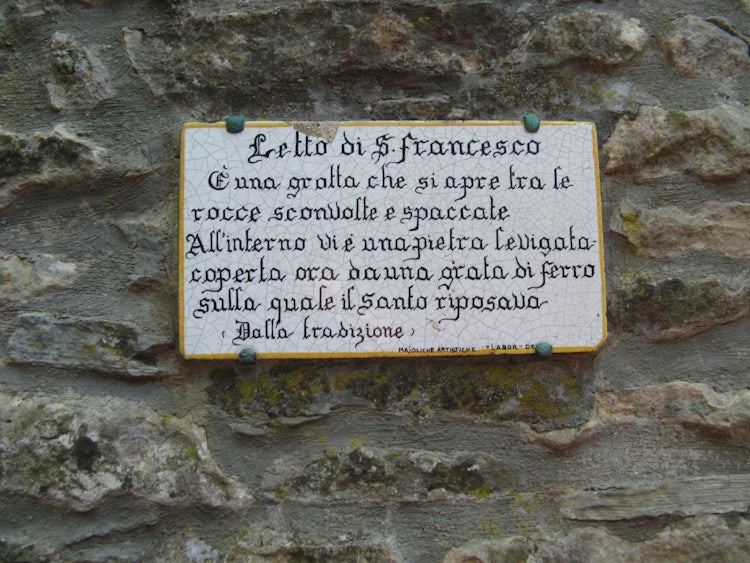
Santa Maria degli Angeli
This little church represents the original center around which the monastery had been developed and it was built after the appearance of the Virgin Mary to St. Francis. The belfry still has the original bell donated by San Bonaventura in 1257. Inside on the altar stands a dossale (altar frontal) made of glazed pottery by Andrea della Robbia from around 1485 that depicts the Assumptive Mary giving her belt to St.Thomas. Close to the entrance are two altarpieces by Della Robbia's school: the Nativity with St.Francis and St.Anthony by Luca della Robbia and the Pity by Giovanni della Robbia.
Basilica and Belfry
From the Quadrante square, you enter the Basilica Maggiore which has one nave and a Latin-cross plan. It was started in 1348 and finished only in 1509 thanks to the contribution of Florence's Wool Guild, whose sign is placed over the vault.
The front of the Basilica is enclosed by a portico that extends almost to the belfry. This has a square plan, is not very tall (24 mt) and dates back to 1400. Its bells can be easily heard in the valley on holidays.
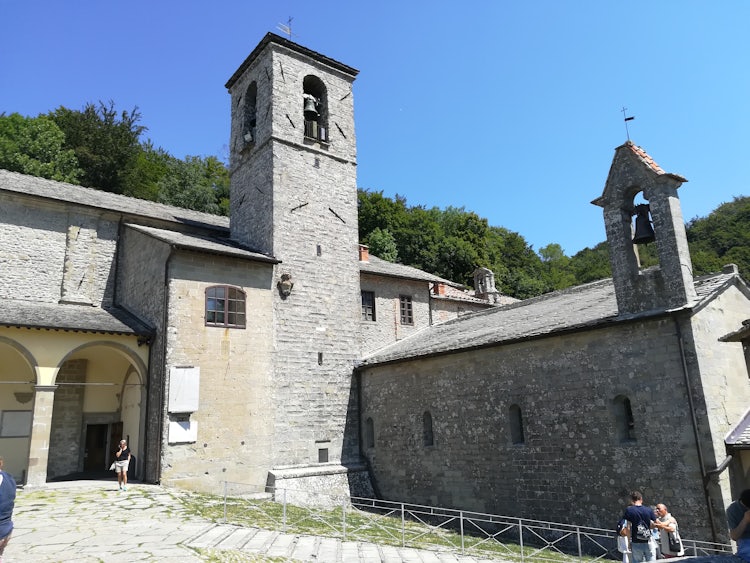
Inside the Basilica are a few precious masterpieces, among these, are several terracotta sculptures by Andrea della Robbia and his workshop such as the Holy Mary of the Shelter (Madonna del Rifugio) that enriched the altar dedicated to St. Francis, the Nativity, the Annunciation and altarpiece of the Ascension. This last one, dating back to 1490, was originally displayed in the center of the church towards the back, completing the decorations and constituting the main attraction of a visit to La Verna.
Inside the Relics Chapel (Cappella delle Reliquie) within a crystal reliquary, are several objects belonging to St. Francis: a tablecloth, bowl, and glass, a piece of rope, the "disciplina" (an iron whip used for mortification of his own flesh), his walking stick. Inside a bronze, the reliquary is the relic of the Saint's blood: it is a linen cloth that he used to dress the wound on his ribs and thus stained with his blood. This relic is carried in processions around La Verna during important holidays.
Within the basilica are also two organs, an engraved one from 1586 and a more recent larger one which is used both for masses and summer concerts.
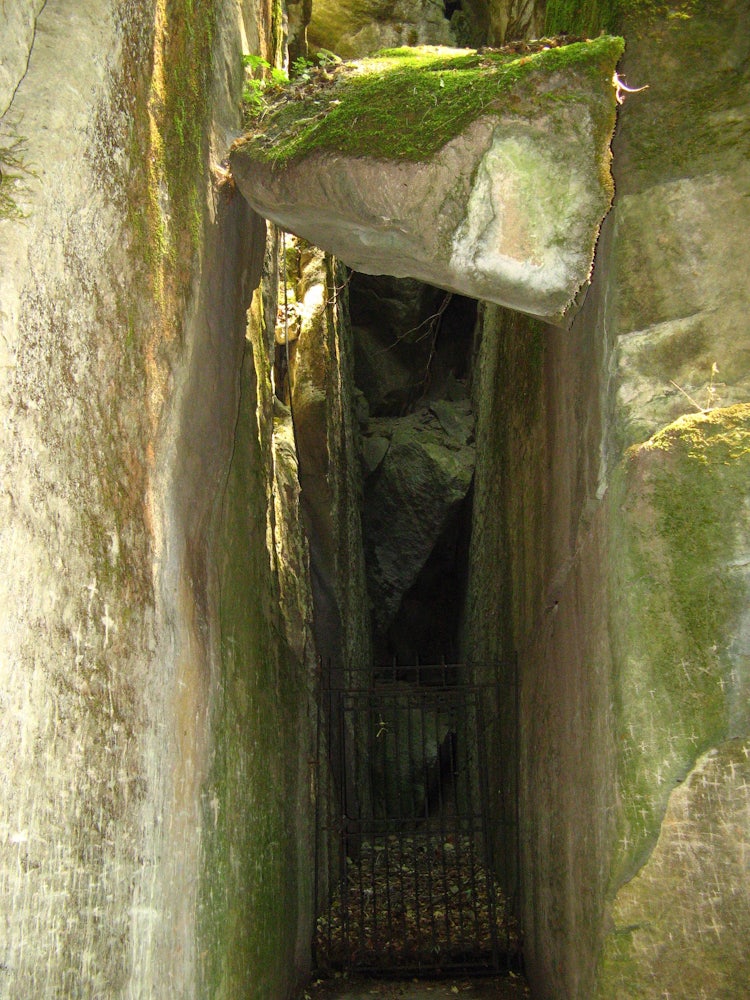
Corridor of the Stigmata
To the left of the Basilica is the Chapel of Piety (Cappella della Pietà), finished in 1532. Probably from the same year is the painted glazed terracotta table depicting the Piety by Santi Buglioni. Passing through an arched door you enter the Corridor of the Stigmata, built between 1578 and 1582. Down this corridor, the friars arrive at the place where Francis got his stigmata. A procession down this corridor has taken place every day at 3pm ever since 1431.
Legend has it that once, on a terribly cold winter night, a terrible snowstorm prevented the friars from carrying out the procession. The morning after, the friars found footprints in the snow that showed the forest animals had carried out the procession in their stead. They decided then to build the corridor as a protective shelter for the Friars on their procession.

The corridor is frescoed with episodes from the life of St. Francis and, in particular, of his time spent in La Verna. The original frescoes were quickly ruined by bad weather and have been re-done over time. Today there are 21 scenes, 18 made by Baccio Maria Bacci between 1929 and 1962 replacing the 17th centuries frescoes by Fra' Emanuele da Como which had already been renovated in 1840 by Luigi and Giovanni Ademollo whose work is still visible in the last three pictures. The scenes of the Saint's life are preceded by a fresco depicting a Nativity: it was Francis himself in 1223 who requested a nativity scene be depicted.
Halfway down the corridor is an ancient door, covered with studs, that gives access to a dark grotto at the end of which stands a large slab of stone. This was the place where St.Francis slept using a rough piece of stone as a bed. The stone itself is protected behind a metal grate as visitors throughout time have considered the stone held miraculous powers and were slowly taking small pieces of it away with them.
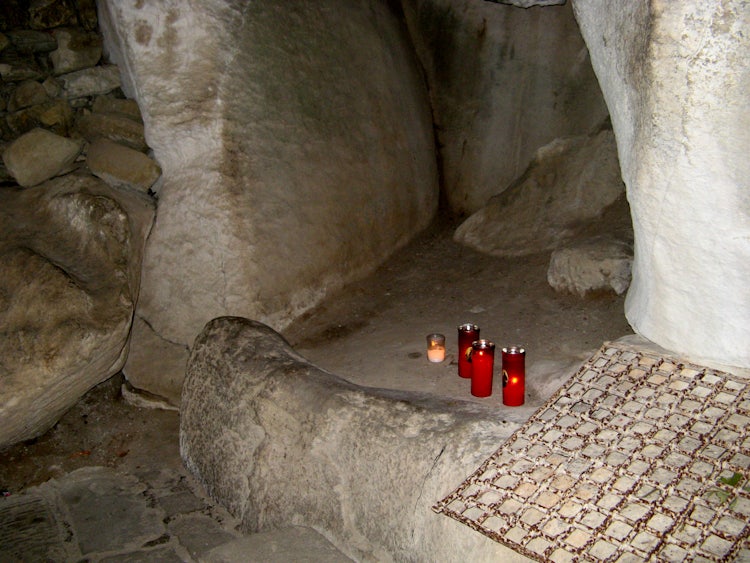
Chapel of the Stigmata
The Chapel of the Stigmata represents the heart of the Sanctuary. It lies over the place where St.Francis received the Stigmata and was built in 1263. On the floor stands a memorial tablet indicating the exact point where the miracle took place. Over the door is a tondo depicting the Holy Mary with the Blessing Child by Andrea della Robbia's workshop. On the end wall is a monumental altarpiece by Andrea della Robbia that depicts Christ crucified surrounded by Angels and, at his feet, the Holy Mary, St.John, St.Francis and suffering St.Jerome.
You can exit and follow a short walkway around the rock on which the Chapel of St. Sebastian and of the guest house is built on. A rail lets you safely admire the landscape around you. On the rock's face, there is a small niche, protected by a grate. Legend has it that St. Francis found refuge in that crevice when the Devil tried to push him down the precipice - the rock itself wrapped itself around him as if it was soft wax sheltering him from the fall.

Sasso Spicco
Another special rock found at La Verna shrouded in mysterious portent is the Sasso Spicco. From the square, you go down a gully surrounded by huge rocks that seem to divide the mountain and here you'll find a massive rock that stretches out over another rock. It looks detached (that's where the name "spicco" comes from, something that peaks out) and stands up only because of the counter-weight of its hidden part. Underneath this natural shelter St. Francis used to pray and deeply meditate upon the passion of Christ as the big wooden cross reminds.
After the visit to the Sanctuary, you can also visit the surroundings which are just as beautiful and interesting. In half an hour of hiking, you can easily reach the summit of the Mount Penna. Here we offer an itinerary to reach the summit of Mount Penna and return back to the Sanctuary with a description of the surroundings.

Getting to La Verna
The closest city to the sanctuary is Chiusi della Verna which is 4 km away. You can drive or take a bus (the bus company is Linea Ferroviaria Italiana) to get the Chiusi della Verna. A few years ago we also found a private taxi that drove us to the Sanctuary from Chiusi by simply asking at a bar.
A Walking Itinerary
When it's nice weather out, it's really nice to walk to La Verna as the ancient pilgrims used to do long ago.
Starting from Chiusi to La Verna hiking up the old paved road which was the only road to the Sanctuary for a long, long time. Along this road, called Ansilice, stands the Cappella degli Uccelli - the Chapel of the Birds - built in 1602 in front of a big Turkish oak. Once again, legend this is the very oak tree where the birds welcomed St. Francis the very first time he climbed up the Mount of La Verna. The Turkish oak, unfortunately, fell during a thunderstorm as did many other centenary plants in the area.
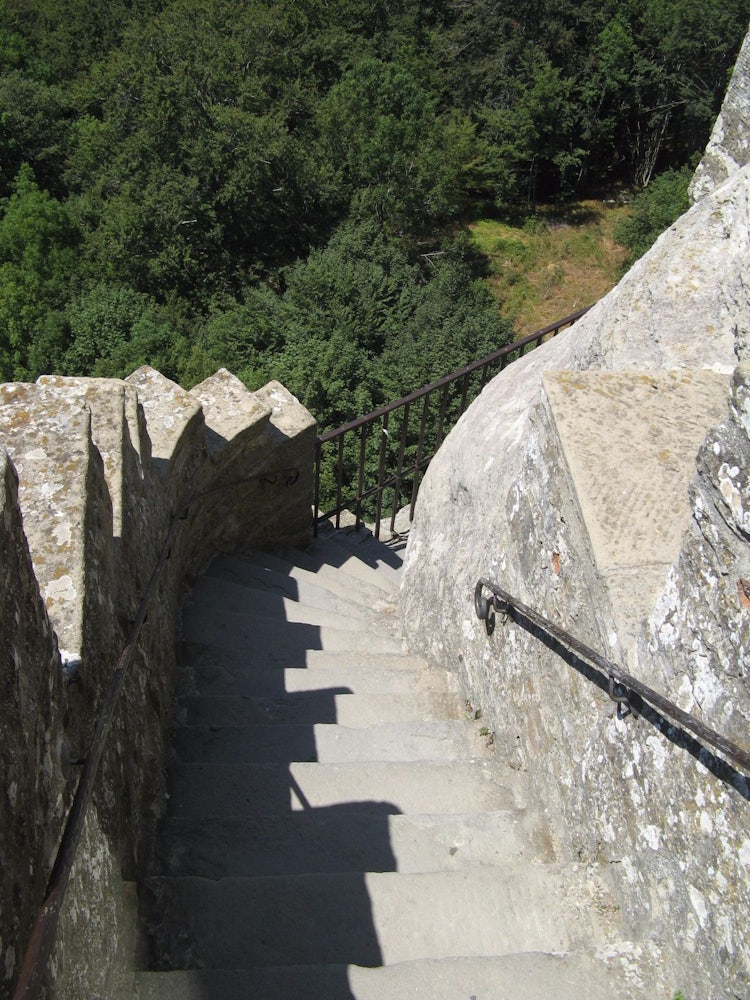
Going along the ancient road you reach the Southern gate of the Sanctuary which was the Sanctuary's old entrance. It's a big arched door called "Porta del Martello" - "Hammer's Door" resting for the most part on a rock.
The whole monastery has this characteristic: the walls are sitting against huge rocks of the Mount Penna which are part of the structure itself so that it looks like the entire monastic complex arises directly from the mountain. Over the door's frame, an inscription states "non est in toto sanctior orbe mons": this is the holiest mount in the world.
You can enter the monastery from this door or continue walking along the monastery's perimeter to reach the main door, a more recent one easily reachable from the parking area just beyond. Here visitors are welcomed by a statue depicting St.Francis asking a child to free the doves he had to sell.

